Bizarre: Amazon's 'Burgeoning Independent Bookseller Program'


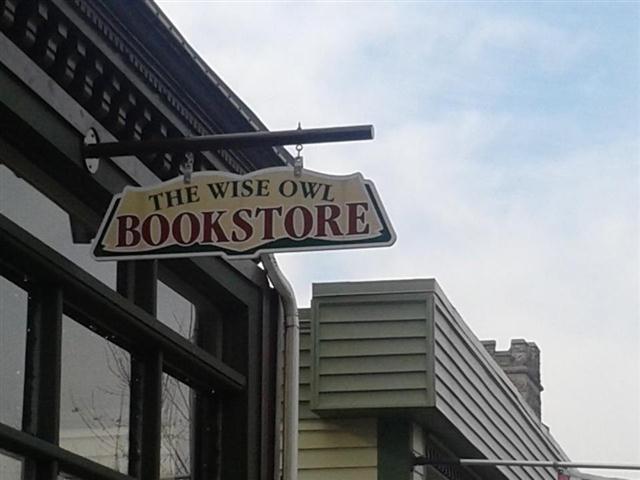 The Wise Owl Bookstore, West Reading, Pa., will close at the end of August. A message on the shop's website expressed sorrow for the decision, noting that "were the economic climate more hospitable, we should have liked to continue selling for many more years to come! Unfortunately, we are not able to support the store any longer, and so after much consideration we've decided to close.... Thank you from the bottom of our hearts for your support and patronage these past two years. We are very sorry to go."
The Wise Owl Bookstore, West Reading, Pa., will close at the end of August. A message on the shop's website expressed sorrow for the decision, noting that "were the economic climate more hospitable, we should have liked to continue selling for many more years to come! Unfortunately, we are not able to support the store any longer, and so after much consideration we've decided to close.... Thank you from the bottom of our hearts for your support and patronage these past two years. We are very sorry to go."
 "There's not a lot written about Iran other than scary news," said author Sara Farizan, during a lively panel discussion called "The Journey of a Young Adult Book--From Writer to Reader," at BookExpo America last week. "It's not such a scary place. People there are just living their lives."
"There's not a lot written about Iran other than scary news," said author Sara Farizan, during a lively panel discussion called "The Journey of a Young Adult Book--From Writer to Reader," at BookExpo America last week. "It's not such a scary place. People there are just living their lives."
Her debut novel, If You Could Be Mine, is the story of two young Iranian women who fall in love in Tehran, and will be published by Algonquin Young Readers this August. The panel, which was moderated by Shelf Awareness children's editor Jennifer M. Brown and also featured Elise Howard and Eileen Lawrence, both of Algonquin Young Readers, convened to recount the journey of Farizan's book from MFA thesis to forthcoming novel.
"I'm super gay, so that was the first inclination," Farizan replied, when asked about her inspiration for writing If You Could Be Mine. "I've been writing a lot of my own teenage experience, and about how my culture sort of combats my super gayness. I tried to answer the question, what if my parents never left Iran, what would my life be like?"
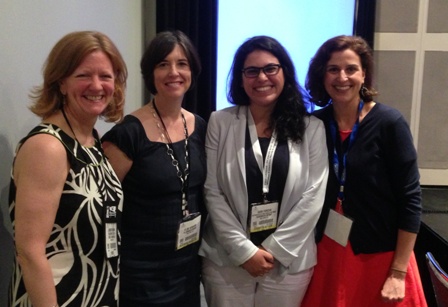 |
|
| L.-r: moderator Jennifer M. Brown, Elise Howard, Sara Farizan and Eileen Lawrence. | |
Farizan, who traveled to Tehran to do research for the novel, described Iran as something of a country of paradoxes, but stressed that she does not want to be considered an expert on anything Iranian. "I don't want to seem like the be-all, end-all on this subject matter, but hopefully this book leads to similar subject matter getting representation.
"I don't know if I'll be able to go [back to Iran] again now," Farizan said, commenting on her worries about the broader reaction to the book. "Even though it's a country I have very strong ties to, I can't impose my beliefs."
If You Could Be Mine arrived at Algonquin Young Readers by way of the writer Chris Lynch, who Farizan described as her "Obi-Wan Kenobi." Lynch teaches creative writing in Lesley University's MFA program, and has known Elise Howard, editor and publisher at AYR, for approximately a decade. Howard related that when Lynch told her about a promising student manuscript, she was initially very skeptical. She explained: "But [Lynch] said, if I could send you only one student manuscript, ever, this would be it."
Howard said, it was "love at first read," and mentioned that Farizan had offered her a kidney out of gratitude. For her part, Farizan described her experience as a "crazy ride," during which she's felt like "a plus-sized Cinderella."
Eileen Lawrence, director of marketing at Algonquin Young Readers, stepped in when the conversation turned to bringing If You Could Be Mine to market. Lawrence mentioned that the story's plethora of relevant themes--from the inside look at Iranian culture, to the struggle for marriage equality and civil rights for LGBTQ people--make the story resonate with many readers for many different reasons.
When asked about the challenges of introducing a new author to a YA market that has exploded in popularity over the last few years, Lawrence stressed that the most important thing is still publishing books that you believe in. "It comes down to having support from your house. And the book has to deliver at the end of the day.... You're never going to see us say that we have a $500,000 marketing campaign."
"We're in it together for the long haul," agreed Howard. "The important thing is communicating the passion we have for our books." --Alex Mutter

During an enlightening conversation at the Downtown Stage, Jonathan Lethem, whose novel Dissident Gardens (Doubleday) will be released in September, fielded a series of excellent questions from Chuck Klosterman, author of the upcoming book I Wear the Black Hat: Grappling with Villains (Real and Imagined) (Scribner, July). Here's a sampling from Lethem's thoughtful responses:
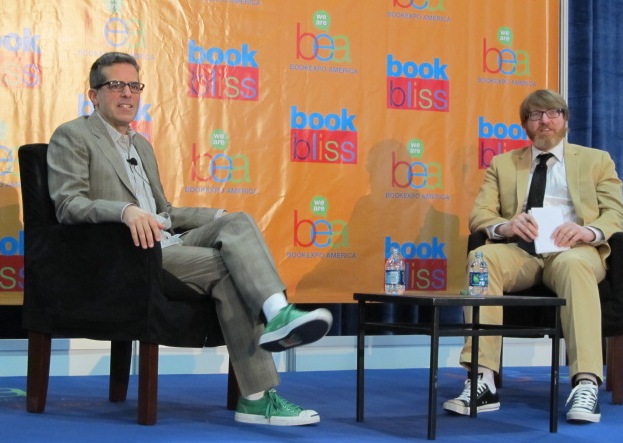 |
|
| Jonathan Lethem and Chuck Klosterman field questions from the Downtown Stage audience at BEA |
|
Politics in his novels: "Art is helplessly political. And I think that all of my books are political because that's sort of what happens. When you make art, it occupies some sort of political space. It either shores up the status quo and people's assumptions or it interrogates them. At some level, it just can't help doing that. This book to me isn't any more political than anything I've ever written before, but what it is is about people who are living lives that are expressly political, consciously political."
Role of the "fantastic": "One of the things that I knew I wanted to do after I'd written three or four books was put very real, very tangible life--like just the day-to-day mundane experience of people slogging through reality, trying to get along--together with what in a way I guess the first name I had for it was the fantastic."
Learning to be a writer in his 20s: "I worked in a bookstore all that time. And I was writing all that time.... I was enacting my apprenticeship in the Bay Area, which is a very different space; it's a place where a lot of people go to develop their life, more on lifestyle terms, less in terms of aspiration, so I was just like weirdly driven.... They just probably saw me as some sort of cartoon character, like oh that bookstore guy who runs home and writes a chapter."
The art of the draft: "I wrote three novels on manual typewriters.... In a funny way, I connected it to my training. I grew up in the home of a painter... I felt in a way like I was carving those novels. It was about a physical urge. You could feel the ripples on the back of the page from the strikes of the letters.... I did use a lot of Wite-Out, which is another thing like being a painter."
Orphans: "I'm thinking about three different possible novels that I will do next and they are right now all really alive to me in this sort of twilight way. And it's sort of tragic because I know I'm going to pick one and the other two will wither and I don't know whether by the time I finish the one I pick those other two will even exist as feelings in me anymore."
Advice to young writers: "I blundered my way in through relentless over-the-transom effort. I just sent my stories to magazines constantly. There was this point where I had 15 stories out on submission, and any time one came back I would pride myself on putting it inside another envelope that very day and sending it out. Like the game was you can't reject me faster than I can submit.... Just keep writing."
And the best advice of all: "I think the primary place writing fiction comes from is reading fiction to absurd excess." --Robert Gray
 "This is not the how to, but why" of social media, declared moderator Kirsten Hess from R. J. Julia in Madison, Conn. The session was designed to help booksellers sort out which of the many platforms to tackle in the most efficient way, Hess said, "because let's face it, we'd all rather be reading a book."
"This is not the how to, but why" of social media, declared moderator Kirsten Hess from R. J. Julia in Madison, Conn. The session was designed to help booksellers sort out which of the many platforms to tackle in the most efficient way, Hess said, "because let's face it, we'd all rather be reading a book."
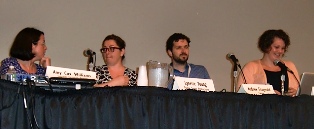 |
|
| L.-r.: Amy Cox Williams, Ingram Content Group, Lynnette Young, Purple Stripe Productions, Andrew Fitzgerald, Twitter; Amy Stephenson, the Booksmith | |
Amy Stephenson from the Booksmith in San Francisco--who, aside from maintaining several Facebook pages, also manages seven e-mail accounts, five Twitter feeds, four Tumblr accounts and two blogs--said social media is a "great way to show off our indie bookseller chops."
Hess asked the panelists if the best advice about social media was for people to choose one platform and get good at it.
"Choose Twitter," was the comic and unsurprising response from panelist Andrew Fitzgerald, news manager at Twitter. But he then went on to offer practical advice. When getting started on any platform, he suggested, look for communities that are already participating in the conversation in the area. For example, he mentioned that museums in San Francisco tweet at one another "as if they are going to rumble in the streets like Sharks and Jets," and said it could be fun and productive (in terms of picking up followers) for booksellers to join that conversation.
The great thing about social media, said Stephenson, is that when getting started, one can ask people why they follow you. Platforms have different audiences, Stephenson said, and once you've taken the time to learn how to communicate on your chosen platforms, they become easier to manage more effectively. "It's the difference between meeting [users] where they live versus shouting at them," she said.
Lynnette Young, owner of Purple Strip Productions, which helps companies of all sizes manage their social media communications, offered this distinction: "Social media is where you want to connect with people; e-mail is where you want to keep them."
Amy Cox Williams, director of product marketing at Ingram Content Group, stressed the importance of integrating social media with e-mail. Since social media shows up in streams, reaching customers is not as guaranteed as it is with e-mail, she explained. Facebook, she noted, has an app that allows users to embed an e-newsletter on their page.
Young advised booksellers to use the G.H.O.S.T. approach to social media. G: Have goals set. H: Be holistic about your approach. O: Set objectives; e.g., a certain number of followers by a certain date. S: Be specific. And T: Don't forget the tactical pieces, e.g., write three posts per day, and track them. "We're all in this for business," she said. "If you start with goals, the strategies will fill in."
The good and the bad news about social media is that, as Stephenson said, it "has the memory of a goldfish." But that, Fitzgerald pointed out, makes it great for experimenting. By all means, he said, feel free to delete and redo posts--and then move on. Inertia, the panelists would agree, is never a good business strategy. --Bridget Kinsella

 |
|
| Anne DeCourcey | |
Last week, David Goldberg resigned as a director of the New England Independent Booksellers Association, saying that he no longer works for Norton as its New England sales rep. Following association bylaws, the board has appointed HarperCollins rep Anne DeCourcey to fill the vacancy until the next regular board election.
Regretting his resignation, the NEIBA board wished Goldberg "much success in the future" and congratulated him on the birth of his first child.
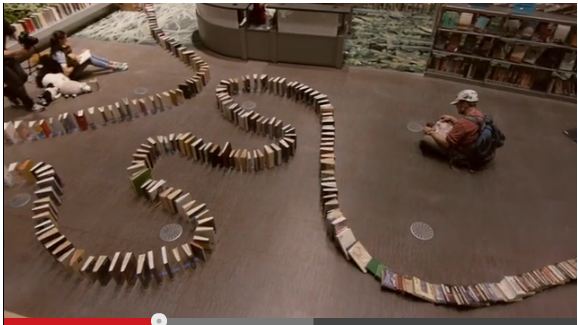
"Even in this day of e-everything and iGadgets, Seattle has a pretty vibrant public library scene," the Post-Intelligencer reported. "Bravo to the librarians that had to put all those books back on their shelves!"
 TheReadingRoom.com, a digital community for readers offering "curated content, recommendations and featured selections," announced during BEA last week that it has added a retail option to its social networking platform that allows members to buy e-books. In addition to reviews and book commentary from members and select book bloggers, TheReadingRoom.com also features reviews from the New York Times and the Guardian.
TheReadingRoom.com, a digital community for readers offering "curated content, recommendations and featured selections," announced during BEA last week that it has added a retail option to its social networking platform that allows members to buy e-books. In addition to reviews and book commentary from members and select book bloggers, TheReadingRoom.com also features reviews from the New York Times and the Guardian.
"We separate reviews from posts and comments," said company CEO Kim Anderson. "While the latter are a great way to build awareness and hype, sometimes they're not enough for a reader to get a sense of whether they will enjoy or want to explore a new writer. Reading outside your favorite genres is not typical for most readers, so breaking in can be difficult for first-time authors and new titles."

Today on NPR's Fresh Air: Suzanne Corkin, author of Permanent Present Tense: The Unforgettable Life of the Amnesiac Patient, H.M. (Basic Books, $28.99, 9780465031597).
---
Tomorrow night on HBO's Real Time with Bill Maher: George Packer, author of The Unwinding: An Inner History of the New America (Farrar, Straus and Giroux, $27, 9780374102418).
---
Tomorrow night on Late Night with Jimmy Fallon: Jim Gaffigan, author of Dad Is Fat (Crown Archetype, $25, 9780385349055).
Filmmaker Ken Burns will team up with author Siddhartha Mukherjee to produce a six-hour documentary based on The Emperor of All Maladies: A Biography of Cancer. The series will air over three nights on PBS in the spring of 2015, USA Today reported. Barak Goodman is the director.
The project has personal overtones for everyone involved. Burns's mother died of cancer when he was 11, and Katie Couric, co-founder of Stand Up to Cancer--which obtained film rights to the book two years ago--lost her husband in 1998 and her sister in 2001 to the disease.
"It's perfect timing for this," said Couric. "There's an insatiable hunger for information about these forms of cancer and for treatment options, as well.... The documentary will be very helpful. It's not all about poor outcomes. It's going to be about things we are learning about the nature of this disease."
Book TV airs on C-Span 2 this week from 8 a.m. Saturday to 8 a.m. Monday and focuses on political and historical books as well as the book industry. The following are highlights for this coming weekend. For more information, go to Book TV's website.
Saturday, June 8
11 a.m. Book TV offers live coverage of the Chicago Tribune Printers Row Lit Fest, featuring seven author events on Saturday and seven more on Sunday. (Re-airs Sunday at 12 a.m.)
7 p.m. Roger Lipsey, author of Hammarskjold: A Life (University of Michigan Press, $35, 9780472118908).
8 p.m. George Shultz, author of Issues on My Mind: Strategies for the Future (Hoover Institution Press, $24.95, 9780817916244). (Re-airs Sunday at 11 p.m.)
9 p.m. Alice Walker, author of The Cushion in the Road: Meditation and Wandering as the Whole World Awakens to Being in Harm's Way (New Press, $26.95, 9781595588722).
10 p.m. After Words. USA Today's Science Reporter Dan Vergano interviews Sally Satel, author of Brainwashed: The Seductive Appeal of Mindless Neuroscience (Basic Books , $26.99, 9780465018772). (Re-airs Sunday at 9 p.m., Monday at 3 a.m. and June 16 at 12p.m.)
11 p.m. Matthew Hancock, author of Masters of Nothing: Human Nature, Big Finance, and the Fight for the Soul of Capitalism (Biteback Publishing, $15.95, 9781849544566).
Sunday, June 9
11 a.m. Book TV's live coverage of the Chicago Tribune Printers Row Lit Fest continues. (Re-airs Monday at 1 a.m.)
6:45 p.m. Robert Edsel, author of Saving Italy: The Race to Rescue a Nation's Treasures From the Nazis (Norton, $28.95, 9780393082418).
8:15 p.m. Book TV presents coverage of the Helen Bernstein Book Award for Excellence in Journalism ceremony, which honored this year's winner Katherine Boo, author of Behind the Beautiful Forevers: Life, Death, and Hope in a Mumbai Undercity (Random House, $27, 9781400067558).
American author A.M. Homes won the £30,000 (about US$46,210) Women's Prize for Fiction for May We Be Forgiven (Granta). Chair of judges Miranda Richardson praised the novel as "a dazzling, original, viscerally funny black comedy--a subversion of the American dream. This is a book we want to read again and give to our friends." In addition, Susan Wallman was named winner of the Women's Prize/Grazia First Chapter Competition for unpublished writers.
Next year, the award formerly known as the Orange Prize will carry a new sponsor's name and be called the Baileys Women's Prize for Fiction.
---
The 25th annual Lambda Literary Awards, celebrating excellence in LGBT literature, were presented in 24 categories at a ceremony held in New York City this week. See the winners on Lambda Literary's website.
Selected new titles appearing next Tuesday, June 11:
Kennedy's Last Days: The Assassination That Defined a Generation by Bill O'Reilly (Holt, $19.99, 9780805098020) explores the Kennedy assassination.
A Million Years with You: A Memoir of Life Observed by Elizabeth Marshall Thomas (Houghton Mifflin Harcourt, $25, 9780547763958) is the memoir of a self-taught naturalist.
The Eye of Moloch by Glenn Beck (Threshold Editions, $26, 9781451635836) is the sequel to The Overton Window.
The Everyday Parenting Toolkit: The Kazdin Method for Easy, Step-by-Step, Lasting Change for You and Your Child by Alan E. Kazdin and Carlo Rotella (Houghton Mifflin Harcourt, $25, 9780547985541) is a parenting guide from the Yale Parenting Center.
Here Comes Mrs. Kugelman by Minka Pradelski, trans. by Philip Boehm (Metropolitan Books, $26 hardcover, 9780805082128, July 9, 2013)
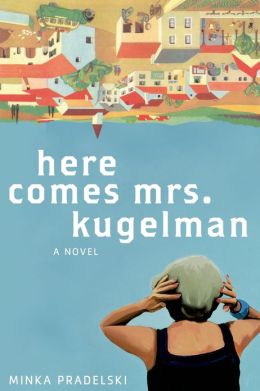
Tsippy is hooked on ice-cold temperatures, to the point that she eats only bags of vegetables from the freezer section of the grocery store, without so much as thawing them first. Her dietary oddities make travel nearly impossible and severely hamper her social life. With no marriage prospects, Tsippy knows breaking her strange habit will help the situation.
Her trip to Tel Aviv takes a sudden nosedive, however, when her hotel gives her reserved room to another traveler. After booking into an allegedly better establishment, Tsippy finds herself chosen for a dubious honor: Mrs. Kugelman, a survivor of the Jewish ghettos from the World War II era, has chosen Tsippy to hear the stories of her hometown of Bedzin, Poland, so that her long-dead friends and neighbors may live once again in the retelling.
At first, Tsippy tries to escape her role as unwilling audience as Mrs. Kugelman inexorably continues reciting tales of her school days. Soon, however, Tsippy begins to appreciate Mrs. Kugelman's companionship and to hunger for more stories of Bedzin, a village that doesn't match the terrifying picture of Polish history Tsippy gleaned from her father. The stories eventually change character, though; as Mrs. Kugelman says, "Peaceful times give way to war... I can't spare you."
While the Holocaust is a frequent subject in fiction, Pradelski takes a different angle with this meditation on the effects of the Holocaust on its survivors and, by extension, their descendants. The secondhand focus allows Pradelski to build two charming and often humorous stories, that of Tsippy's search for her identity and her future and that of the people of Bedzin, while subtly showing the contrast between the pre-war and post-war mentalities of Jewish survivors. The result is a dual narrative that manages to carry off both sweetness and pathos seamlessly, leaving the reader to ponder the power of hope over sorrow. --Jaclyn Fulwood
Shelf Talker: A Polish Holocaust survivor in Israel chooses a young Jewish woman visiting from America to hear the stories of her friends, family and town before the Nazis destroyed everything.
The bestselling self-published books last week as compiled by IndieReader.com:
1. Life Code by Dr. Phil McGraw
2. Wool Omnibus Edition by Hugh Howey
3. Shocking True Story by Gregg Olsen
4. Pieces of You (Shattered Hearts) by Cassia Leo
5. The Billionaire's Obsession: The Complete Collection Boxed Set by J.S. Scott
6. Beauty from Surrender (Surrender Series #2) by Georgia Cates
7. Relentless Pursuit (Bluegrass Brothers) by Kathleen Brooks
8. A Different Blue by Amy Harmon
9. My Side by Tara Brown
10. Forever You by Sandi Lynn
[Many thanks to IndieReader.com!]